Horse Arena Construction
Where to Build Your Arena
Before constructing your horse arena, selecting the right location is crucial. There are numerous factors to consider, and while some might be obvious, others may require deeper thought. In this guide, we’ll walk you through the essential aspects of planning and building your horse riding arena, covering everything from site selection to basic construction steps.
Ensuring There Is a Good Entrance to the Site
Lack of accessibility to your intended arena site can create several issues. First, suppliers or couriers may struggle to deliver materials directly to the site, leading to costly additional haulage fees. Additionally, large machinery like diggers and lorries will be necessary during construction, and poor access could force builders to rely on smaller vehicles, increasing time and expense. Therefore, if feasible, choose a location with enough space that accommodates large vehicles.
If direct access proves impossible, consider reaching out to a local farmer. They might allow you to drop off supplies on their land at a fraction of the haulage cost. From there, you can arrange transportation via smaller vehicles. Farmers often have the right equipment to move materials to your desired location, so striking a deal might save both time and money.
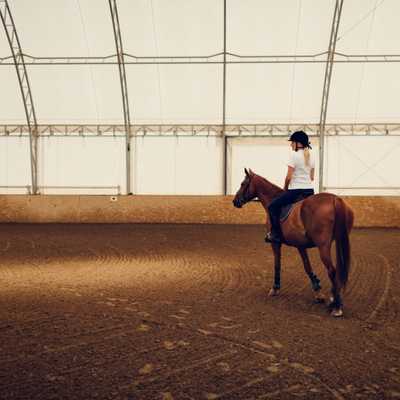
Choosing the Correct Place for Drainage
Proper drainage is vital for a horse arena’s success. Before finalizing your location, determine where the water from the drainage system will be discharged. Common options include soakaway systems or simple ditches. However, local regulations regarding discharge vary, so always consult your local authorities before proceeding.
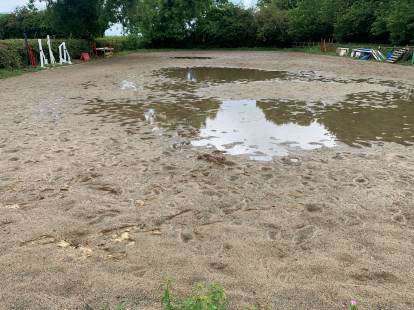
Getting the Correct Levels
Excavation should ideally be kept to a minimum. Naturally, uneven terrain will require more digging, which comes with significant costs. If leveling involves extensive excavation, expect hefty expenses and a considerable amount of waste material afterward. Sloping land may benefit from the cut-and-fill method, where soil from higher areas is redistributed to flatten lower sections. However, leveling typically carries unavoidable costs.
What to Do About Exposing My Arena to the Elements?
Horse arenas are prone to losing aggregates like silica sand, especially during windy conditions. To mitigate this, consider building indoors or, if outdoors, placing the arena near a hedge or surrounded by trees to serve as a natural windbreak.
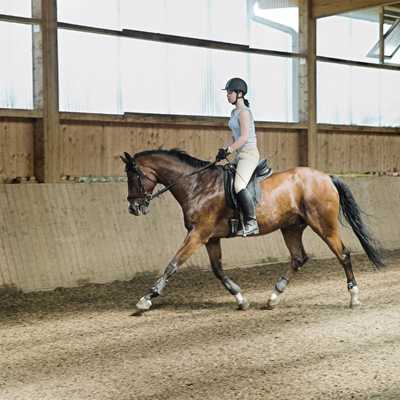
How to Correctly Mark Out Your Area and Excavate the Land for Your Horse Menage Construction
Once the ideal location is selected, the excavation process begins. Always mark out an area slightly larger than your planned arena to provide ample working room. For instance, if your arena measures 100m x 80m, aim for an excavation area of 102m x 82m. Begin by marking the corners with wooden posts and use a string line between them to guide the digger. Verify the accuracy by checking the diagonals—equal diagonals confirm correct alignment. Start by removing the topsoil to expose the subsoil, identifiable as the layer beneath the surface soil. Topsoil must be removed and either stored or disposed of properly. Selling reusable topsoil can offset removal costs. Ensure the soil remains in good condition for future landscaping needs.
What Drainage Method Do I Use for My Project?
After excavation, focus on the drainage system—the heart of your arena. Proper drainage ensures the arena performs optimally. The "Herringbone Drainage System" is the gold standard, involving a 100-150mm central pipe connected at 45-degree angles to shorter 75-100mm perforated pipes every five meters. The central pipe discharges into a soakaway or ditch. Trenches should be shallow yet functional, ensuring proper flow.
Using Woven Membrane for Equestrian Riding Arenas
Next, lay the woven geotextile membrane across the entire area. This membrane stabilizes the ground, preventing soil from mixing with the layers above. Ensure the membrane covers areas where perforated pipes will sit. Backfill with 20mm pea shingle, keeping it clean to avoid clogging.
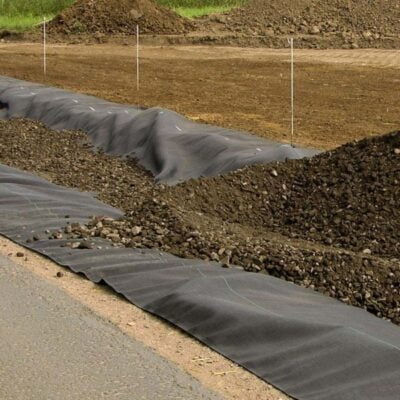
Sub Base and Fencing for Riding Arenas
Level the site and proceed with the sub base installation. Aim for a depth of six inches. Depending on availability, crushed limestone is the preferred choice for its purity. Avoid recycled materials if they contain impurities. Compact the sub base using a laser level and excavator roller to trap water effectively during heavy rain.
For fencing, opt for a three-bar post and rail system for safety. Posts should be driven deep enough to reach subsoil, and gravel boards attached to protect them from moisture.
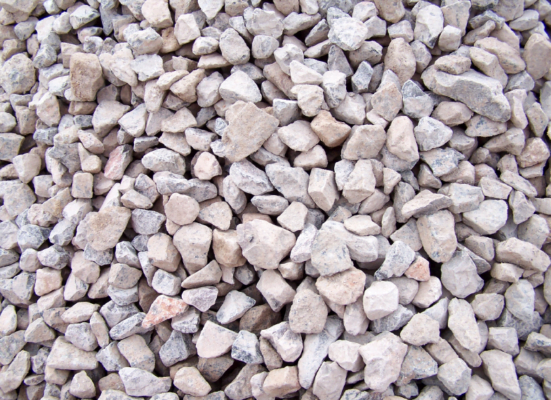
Using Non-Woven Membrane for Equestrian Riding Arenas
When installing the upper membrane layer, use a non-woven geotextile membrane weighing at least 300GSM. Incorrect installation or a lower GSM can lead to membrane damage and loss of sand. Secure the membrane to gravel boards, sealing joints carefully. Non-woven membranes allow water to pass through while keeping aggregates separate.
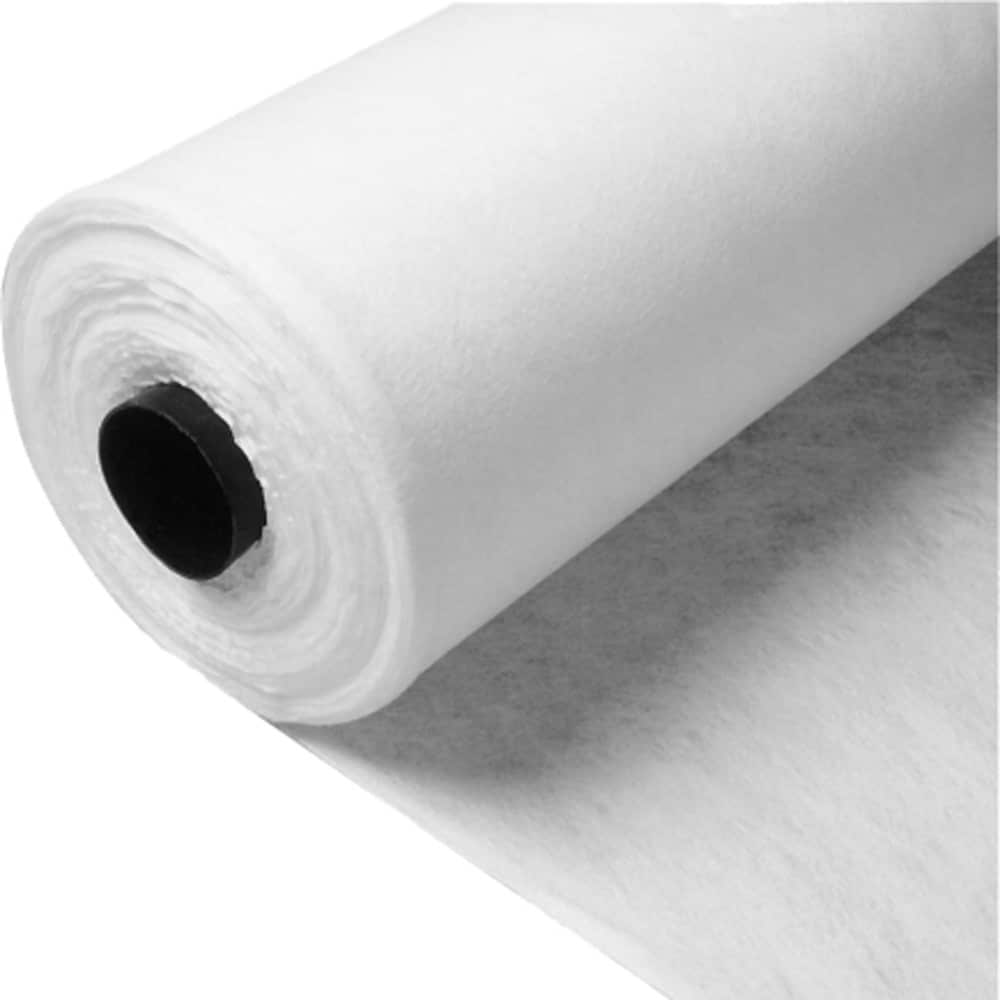
What to Use for Your Surface Layer?
Silica sand, often mixed with rubber chippings, is commonly used for the top layer. The choice depends on remaining budget. Ensure a depth of at least four inches, avoiding vehicle traffic over the membrane to prevent damage. Use a roller and laser level to maintain evenness. Optionally, add two inches of rubber chippings for extra cushioning. Finally, your arena is ready! Enjoy countless hours of riding ahead. If anything remains unclear, feel free to reach out via email or phone—we’d love to assist!
Shop Horse Arena Membranes:
Self-locking nut is a nut widely used in machinery and other industries. Its working principle is self-locking by using the friction between nut and Bolt. However, the reliability of this self-locking will be reduced under dynamic load. On some important occasions, we will take some anti-loosening measures to ensure the reliability of nut locking.
Self-Locking Nut,Self Locking Bolts,Self Tightening Nuts,Self Locking Flange Nut
Jiangsu Jiajie Special Screw Co., Ltd , https://www.jiajiescrewcompany.com